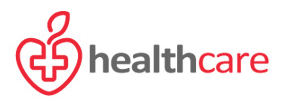
Technological advancements enhance the quality of life. Technological innovations benefit both the medical industry and the patients. The right technology will enable doctors to treat and detect diseases sooner. It also helps them reduce the overall treatment costs and improve patient health. Technology in healthcare also allows for effective healthcare project management that leads to higher production and output. It also enhances collaboration and facilitate efficient task management. Here are five ways of reducing healthcare costs using technology.
Automating Administrative Work
Healthcare automation significantly simplifies administrative tasks. From managing patient records to scheduling appointments, automated systems ensure accuracy and efficiency. This helps to reduce the workload on healthcare workers and also saves time. This allows them to focus more on patient care. Doctors today use different software to automate their daily administrative tasks. You can automate other essential tasks, such as sending reminders and booking appointments, to boost overall efficiency.
Lowering Staffing Costs
Healthcare providers can increase efficiency, lower costs, and free up resources by implementing AI-powered systems to automate administrative tasks. The sector can also enhance accuracy and patient outcomes by lowering manual labour and human error. Staffing issues can be draining to health workers. Hospitals can manage their staffing schedules better and reduce healthcare expenses with proper staffing strategies and technologies. This will impact patient outcomes positively.
Reducing The Need For Specialists
There are two main ways that virtual care contributes to lower healthcare costs. First off, it provides patients with easily accessible and flexible clinical care. Second, because doctors can provide primary care and reduce unnecessary and costly use of emergency room visits, it helps save costs for patients and healthcare providers.
The Potential of Telemedicine
Patients can receive care at home thanks to telemonitoring systems as well. As a result, they have more control over how their illness is treated and fewer hospital visits. Patients who live far away from hospitals cannot travel there. Telemedicine offers them access to reasonably priced healthcare. Due to several factors, this technology has become an essential enabler of future healthcare. These factors include the widespread use of mobile devices, faster Internet connections, and evolving insurance standards. It makes financial sense for healthcare institutions to invest in virtual care.
Better Optimizing Supply Chain
Among the main advantages of supply chain optimization is that Easier supply chain planning leads to decreased supply chain maintenance and operation costs. It also facilitates better cooperation between supply chain stakeholders. While most technology solutions offer a high return on investment, some may appear to be highly costly. That is primarily due to the low implementation costs, particularly for software solutions. As technology advances, competition increases, and hardware solutions are widely adopted, their cost also decreases.
Bottom line
New technologies make improved patient care, cost savings, and innovation possible. By using remote monitoring systems, patients can send their doctors their vital signs straight from their homes. This enables prompt attention to potential problems. Good disease management can lower hospitalization rates, benefit patients’ health, and save money.




